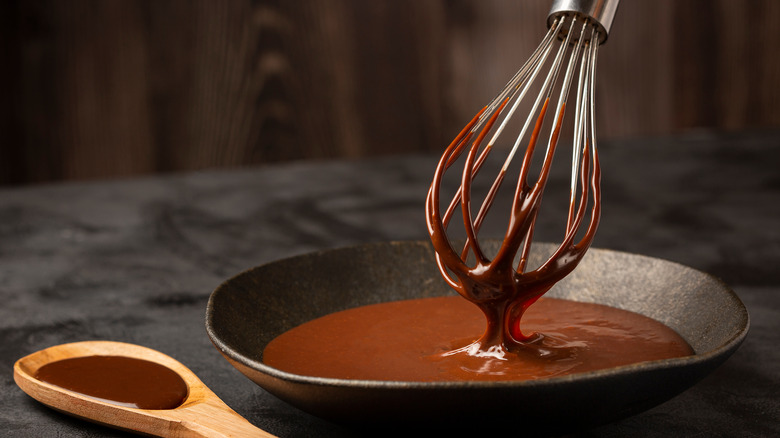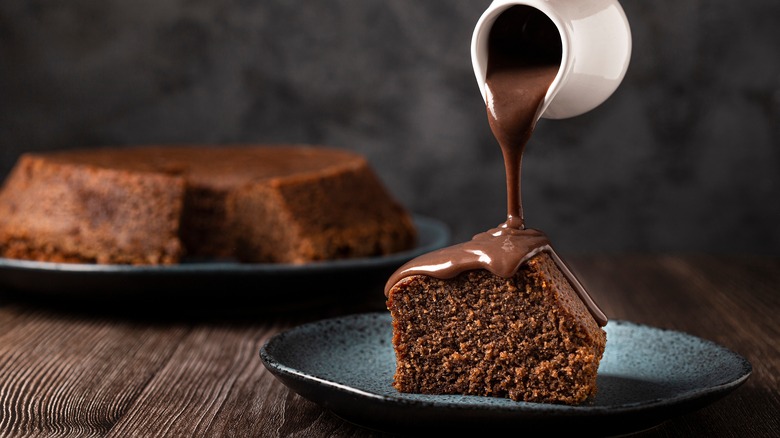What's The Actual Purpose Of Thinning Chocolate?
On its own, a bar of chocolate may seem like a simple confection. This is a false front because applying any type of heat to this tasty candy makes it rather temperamental. There's a reason they call it tempering. The process by which chocolate is melted down, cooled, and stabilized to a glossy finish is hands-on and sensitive (via Ghirardelli). The melting phase in particular is subject to temperature, cooking apparatus (such as the microwave), chocolate type, and patience on the part of the would-be chocolatier.
Melted chocolate is prone to a number of potential pitfalls, the most common of which is seizing. According to Hotel Chocolat, seizing happens when melted chocolate is exposed to moisture, causing it to become clumpy. We told you chocolate was tricky! However, let's assume that you've properly melted your chocolate and now have a silky smooth bowl of molten gold. It's a little on the thick side though. Can anything be done about that?
Thinning chocolate is the process of adding fat to give melted chocolate a thinner consistency, per MasterClass. Think Willy Wonka's chocolate river. If your recipe calls for adding butter, oil, cocoa butter, or shortening to your melted chocolate, that's thinning. This technique is utilized to make melted chocolate easier to work with for a variety of different uses.
Uses for thinned chocolate
Much of thinning comes down to the chocolate's fat content. In generally, the more fat a chocolate has, the thinner its resulting melt would be. This is why white chocolate melts thinnest of all — it's mostly composed of cocoa butter. Dark chocolate, too, melts thinner than milk chocolate does, due to its higher cocoa content (via MasterClass).
One of the most famous examples of thinning is hot chocolate. We have the Aztecs to thank for creating a cacao-based beverage, but hot chocolate as we know it today — sweet, rich, and frothy — was developed in Europe during the 16th century (via the Institute for Culinary Education). Making hot chocolate from scratch is straightforward matter of adding milk and sugar to melted chocolate. The milk fat will incorporate with the chocolate, rendering it down to a thinner, more drinkable state. (If you've got the patience, you'll never go back to the powdered kind again).
It's not as though hot chocolate is the only use for thinned chocolate. For example, having a thinner chocolate for dipped fruits or pretzels allows the coating to easily cover more surface area. And chocolate ganache is also made via thinning. Emulsified with heavy cream (or another type of liquid), ganache serves multiple purposes, such as filling cakes and truffles or becoming a glaze or frosting for all sorts of treats, per The Pioneer Woman.

